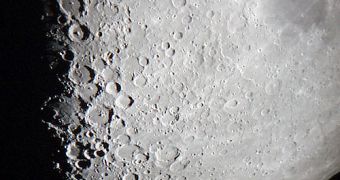Lunar quakes were discovered during the Apollo missions, and found to be of several types, but the actual source for each of them has eluded scientists so far, given that our natural satellite has no record of tectonic activity. And if we are ever to have a stable base on the Moon's surface, one that can take into account the seismic motion, we definitely need more data in this respect. That is why the British plan a £100 million (about $150 million or €120 million) mission that will plant four seismic probes 6 feet (2 meters) deep in the lunar surface.
Backed up by NASA, UK's Moon Lightweight Interior and Telecommunications Experiment (MoonLITE) mission will follow approximately the same scenario as the Chandrayaan-1 spacecraft launched just weeks ago by the Indian Space Research Organisation. The main probe orbiting the Moon will fire four suitcase-sized probes that will partly bury themselves in the lunar soil, providing seismic, chemical composition, temperature and maybe water presence data.
Currently, the sources attributed to lunar quakes are the Earth's gravitational pull, rock expansion under sunlight heat, or under-crust geological activity. "While the Earth has eroded away that first 1,000 million years of history, the Moon however still holds a record of how frequently we were being hit by meteorites and the extent to which we were having water and other molecules delivered by comets," shared Dr. Ian Crawford, from Birkbeck College's school of Earth sciences at the University of London, about the other goals of the mission, as cited by The Telegraph.
"MoonLITE will allow us to send penetrators to the polar regions and far side of the Moon which have not been explored in previous missions. Knowing more about these moonquake events is quite important as if we are going to build a lunar base that is susceptible to them, we want to know and we will need to have structures that can withstand them," added the scientist. If approved by the ministers, the project is slated to be launched between 2012 and 2014, and the whole mission is expected to last a year.

 14 DAY TRIAL //
14 DAY TRIAL //